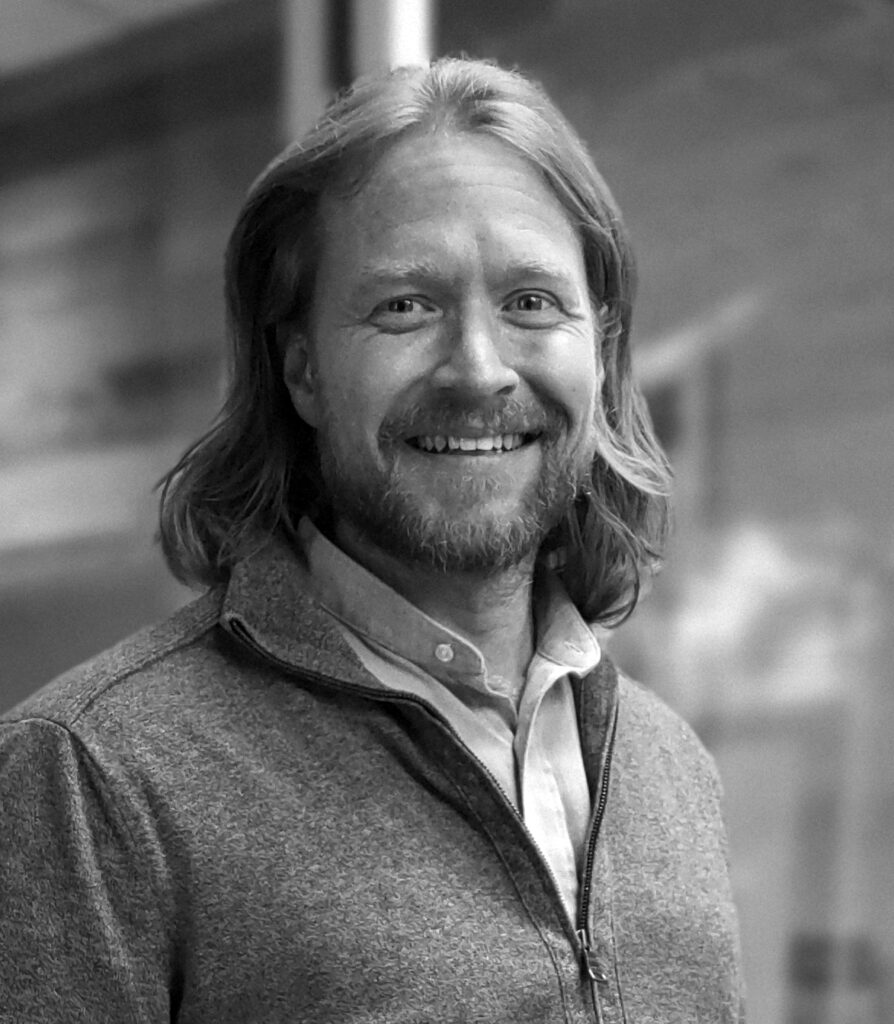William Abrahamson, AIA, is a senior associate at Grimm + Parker Architects, with offices in Charlottesville, Tysons, and Calverton, Maryland. He’s also Co-Chair of Virginia’s Committee on the Environment (COTE), which is hosting “Creating Your Sustainability Action Plan,” a workshop at Architecture Exchange East (ArchEx) in November. Since July, Virginia COTE members have been presenting a multi-part series called “Embodied Carbon 101,” which originated with the Boston Society of Architecture and aims to empower architects at the design and specification stages (and beyond) to make sustainable choices. At ArchEx, Abrahamson and COTE will offer specific and actionable steps for architects and designers to continuously work with the environment in mind.
Architects and engineers should be fully empowered to consider how they change our climate, local ecosystems, politics, the economy. When I pursued my graduate work at MIT, it was a great environment for combining disciplines. It’s a melting pot of rigorous thinking where no discipline is siloed. Every discipline benefits from an expansive definition of professional service. Ultimately, that became my thinking for my professional career.
Within architecture we have a smaller toolbox, but it touches so many things. Architects are responsible for allocating materials responsible for 20% of annual global warming emissions. Our modest design choices can have huge impacts aggregated across industries. Our creative guidance to owners and governments can improve development patterns, reducing emissions from sprawl. Acknowledging that power and knowing how to wield it, gives architects a lot of responsibility.
Architects are literally on the frontlines of the climate crisis. To meet the 1.5°C carbon budget, all new buildings and major renovations must be designed to be zero carbon today. Outside of regulators, we have the most impact and we should look at that as both challenge and opportunity.

One of the first questions people have is, “How do I get started? How do I track my progress?” and the first step is creating a plan specific to your work. Every signatory to The 2030 Challenge must submit a Sustainability Action Plan. For people who are considering signing on, Virginia COTE is hosting a workshop titled, “Creating Your Sustainability Action Plan” that will feature practitioners who have done it and will answer questions.
At Grimm + Parker Architects, we’re a community-based firm. We do a lot of public work, a lot of affordable housing and because we cross market sectors, we must satisfy a dozen different sustainability rating systems. There’s no way any one person can be an expert in all of them, so we distribute the load and share knowledge. Over time, we have found a strength in building up our specifications. Low-carbon specs can cross projects, building types, and markets. If we have a robust vetting process for sustainability, we don’t have to repeat the guesswork and research on every project, improving efficiency and profitability. The point is that it’s a tool that allows breadth of low-carbon expertise across the firm. We view it as being integrated on every project.
My biggest recommendation for people starting out in this space is that there are a lot of existing tools and research out there right now that can help you learn quickly. It’s not something to be scared of, and Virginia COTE is hosting the “Embodied Carbon Modeling Workshop” at ArchEx to help you. — As told to Caitlin Reagan
This interview has been edited for clarity and length.
Team Three is an editorial and creative consultancy based in Washington, D.C.
